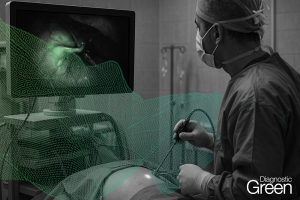Objective: This study aimed to validate the clinical feasibility, safety, and effectiveness of using the fluorescence endoscopy with second window indocyanine green (FESWICG) technique for resection of malignant brain tumors.
Methods: Twenty-two patients undergoing surgery for malignant brain tumor resection were examined. Intravenous ICG (250 mg) was administered within 24 hours prior to surgery. All procedures were performed under endoscopic guidance. The fluorescence intensity of the tumors was monitored using fluorescence mode endoscopy. Specimens including resection margins were harvested and submitted for histopathological analysis. The sensitivity and specificity of FESWICG were validated using contrast-enhanced cranial magnetic resonance imaging performed within 24 hours of surgery and histopathology. The Karnofsky performance scale was used to assess overall functional status before and after surgery.
Results: The tumor diagnoses were as follows: glioma (n = 14), ependymoma (n = 1), metastasis (n = 5), lymphoma (n = 1), and choroid plexus papilloma (n = 1). Intraoperative tumor fluorescence was strong in 20 patients and weak in two. Postoperative contrast-enhanced imaging revealed complete tumor resection in 18 patients (81.82%). Sixty-four tumor specimens were collected, including 42 obtained from tumor margins. Using histopathology as the reference, the sensitivity, specificity, positive predictive value (PPV), and negative predictive value (NPV) of FESWICG for detection of malignant brain tumors were 91.42%, 41.38%, 65.31%, and 80%. The median Karnofsky performance scale score was 85 before surgery and 93 at the 3-month follow-up.
Conclusions: SWICG notably enhanced intraoperative visualization of malignant brain tumors, particularly the delineation between tumor and normal brain. Its utility for margin detection is promising. When utilized in conjunction with a full endoscopic system, the visual acuity and overall effectiveness of surgical procedures can be substantially enhanced. However, ICG remains a low-specificity technique.




